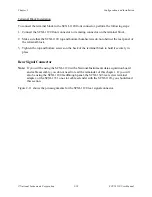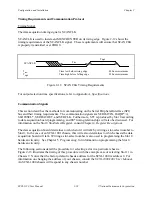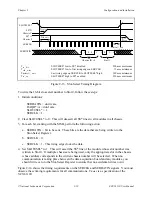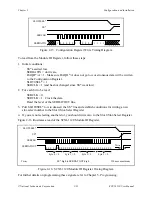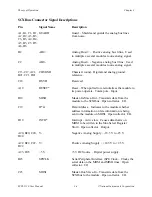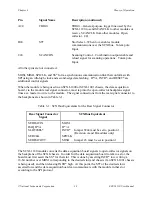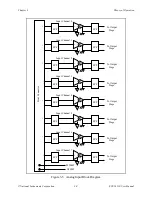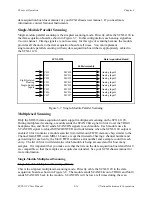
Chapter 3
Theory of Operation
© National Instruments Corporation
3-5
SCXI-1120 User Manual
Pin
Signal Name
Description (continued)
A24
TRIG0
TRIG0 – General-purpose trigger line used by the
SCXI-1120 to send SCANCLK to other modules or
receive SCANCLK from other modules. Open
collector. I/O.
B24
SS*
Slot Select – When low, enables module
communications over the SCXIbus. Totem pole.
Input.
C24
SCANCON
Scanning Control – Combination output enable and
reload signal for scanning operations. Totem pole.
Input.
All other pins are not connected.
MOSI, MISO, SPICLK, and SS* form a synchronous communication link that conforms with
SPI using an idle-high clock and second-edge data latching. D*/A, INTR*, and RESET* are
additional control signals.
When the module is being used in an SCXI-1000 or SCXI-1001 chassis, the data acquisition
board, via the module rear signal connector, must tap into the open-collector backplane signal
lines as a master to write to the module. The signal connections from the rear signal connector to
the backplane are shown in Table 3-1.
Table 3-1. SCXIbus Equivalents for the Rear Signal Connector
Rear Signal Connector
Signal
SCXIbus Equivalent
SERDATIN
MOSI
DAQD*/A
D*/A
SLOT0SEL*
INTR*
Jumper W44 must be set to position 1
(Revision A and B modules only)
SERCLK
SPICLK
SERDATOUT
MISO
Jumper 43 must be set to position 1
The SCXI-1120 module converts the data acquisition board signals to open-collector signals on
the backplane of the SCXI chassis. In order for the data acquisition board to talk to a slot, the
board must first assert the SS* for that slot. This is done by asserting INTR* low, writing a
16-bit number over MOSI corresponding to the desired slot (and chassis if an SCXI-1001 chassis
is being used), and then releasing INTR* high. At this point, the SS* of the desired slot is
asserted low and the data acquisition board can communicate with the module in that slot
according to the SPI protocol.


